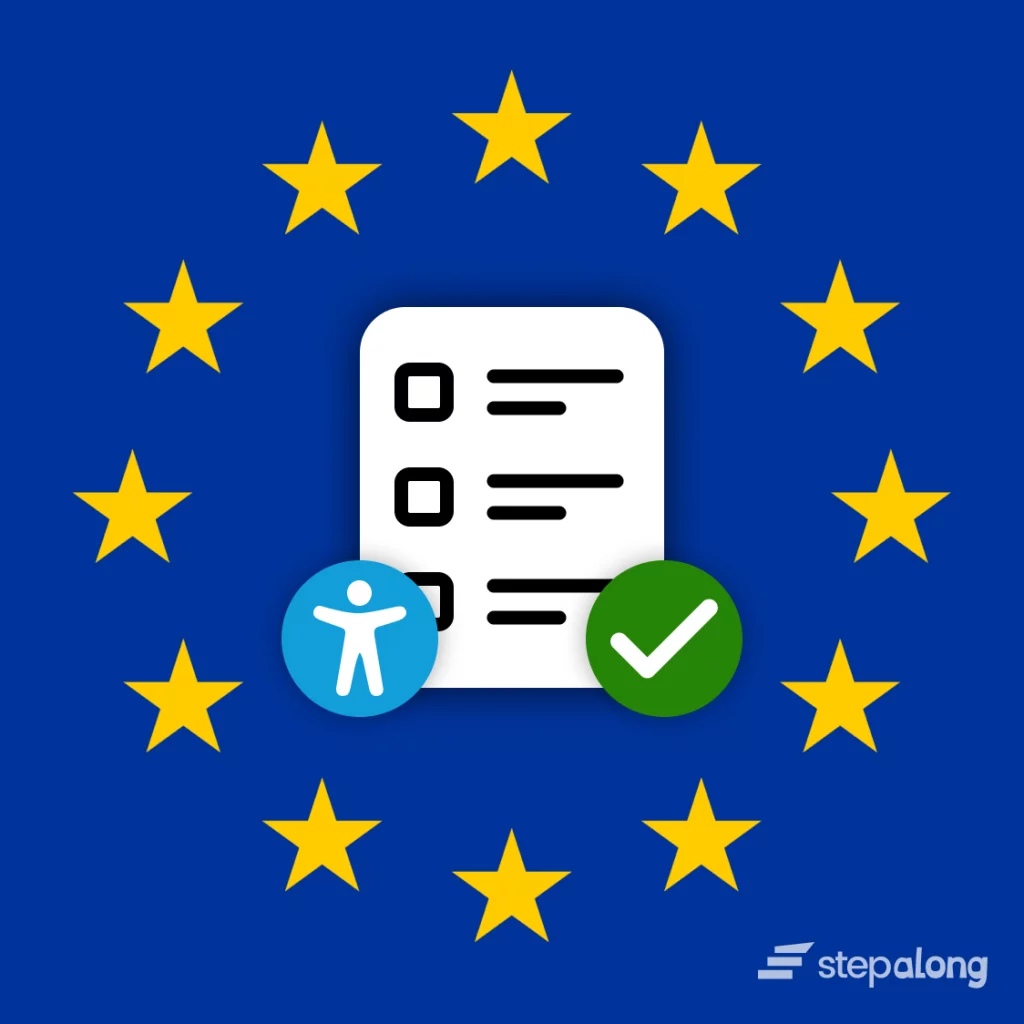The “GDPR” for Product Instructions?
Most businesses are familiar with the GDPR, the EU regulation that transformed how companies handle digital privacy by setting a unified standard across member states. Similarly, the European Accessibility Act (EAA) aims to establish a common standard for accessibility in products and services. This directive ensures that people with disabilities, the elderly, and other groups can access and effectively use the products and services offered in EU member states.
Adopted in 2019, the EAA provided the 27 EU member states with three years to incorporate the directive into national laws, with businesses given until June 28th 2025 to comply with the new regulations. Now, as the compliance deadline for businesses is approaching, the EAA has become a pressing topic for businesses worldwide.

A critical aspect of the EAA is its broad reach: it applies to any company offering included products or services within the EU, regardless of where the company is based. For businesses outside the EU, this means meeting the EAA’s accessibility standards is essential to access the EU market.
By embracing the EAA’s requirements, companies have a unique opportunity not only to comply with the law but also to improve the usability and inclusivity of their products and services for all customers.
What does the EAA have to do with my Product Instructions?
The EAA covers all aspects related to the usability of a product or service, from its interface to its supporting information, such as manuals and instructions. These materials must be clear, understandable, and accessible to people with disabilities. PDFs are no exception—the directive classifies them as digital documents and applies specific accessibility requirements.
The EAA is applicable to different products & services, as listed below, but the most important and broadest is Ecommerce where every aspect of the experience has to comply, including all product information, specifications, and instructions must be provided in accessible formats.
What Products & Services does the EAA apply to?
| Information and communication, including ICT | • Television and related services • Computers and operating systems • Websites • eBooks • Self-Service Terminals • Mobile telecommunication equipment • Telecommunication services (emergency and relay services) |
| Built (physical) environment | • Architectural services |
| Transport | • Bus transport services • Rail transport services • Maritime transport services • Air transport services |
| Other areas | • Banking services • Ecommerce • Hospitality services |
Source: Deloitte, retrieved from EUR-Lex – European Accessibility Act.
What are the EAA Requirements?
Here is a summary of the key requirements:
Clear & Understandable Instructions
- Requirement: Instructions must be easy to understand for all users, including those with cognitive, visual, and hearing impairments.
- Implication: Use clear language, logical structure, and avoid jargon. Support text with symbols, illustrations, or videos where possible.
Multiple Formats
- Requirement: Instructions must be provided in accessible formats, such as braille, large print, and digital formats compatible with assistive technologies.
- Implication: Businesses must invest in creating instructions that can be accessed through screen readers, voice-over systems, or tactile outputs.
Digital Accessibility
- Requirement: If instructions are hosted online, the platforms must comply with the Web Content Accessibility Guidelines (WCAG) 2.1, at least at level AA.
- Implication: Ensure digital instruction hubs or websites are fully accessible, including keyboard navigation, alternative text for images, and adequate colour contrast.
Localization & Translation
- Requirement: Accessibility must be ensured in all languages the instructions are offered in.
- Implication: Translations must adhere to accessibility standards, meaning not just text translation but also accessibility considerations (e.g., simplified layouts, culturally relevant icons).
Testing for Accessibility
- Requirement: Manufacturers and service providers must test their instructions for compliance with accessibility standards.
- Implication: This may involve usability testing with individuals who have disabilities to ensure the instructions meet their needs.
The EAA not only enhances inclusivity for people with disabilities, which is a significant and positive step forward, but it also presents an opportunity for companies to finally focus on making great instructional and setup experiences for their customers.
By encouraging businesses to prioritize clear, user-friendly instructions, the EAA helps ensure that manuals are designed with the end user in mind rather than simply checking a box. And while your product or service might not be affected by the EAA, adopting the practises can lead to more engaging, effective, and universally appreciated product instructions and documentation, and happier customers.
How can StepAlong Help?
StepAlong already aligns with many key aspects of the EAA, and we’re working to ensure that all instructions created on our platform—whether online or in PDF—will exceed EAA compliance well ahead of the deadline.
Contact us for a demo of the StepAlong Product Instruction Platform and discover how it can improve your customer experience, streamline your internal processes, and seamlessly support your compliance with the EAA.
We’ll be posting more updates about the impact of the EAA and how StepAlong is working to incorporate it over the coming months.





One response to “The Impact of the European Accessibility Act on Product Instructions”
[…] Recommended post: The Impact of the European Accessibility Act on Product Instructions. […]